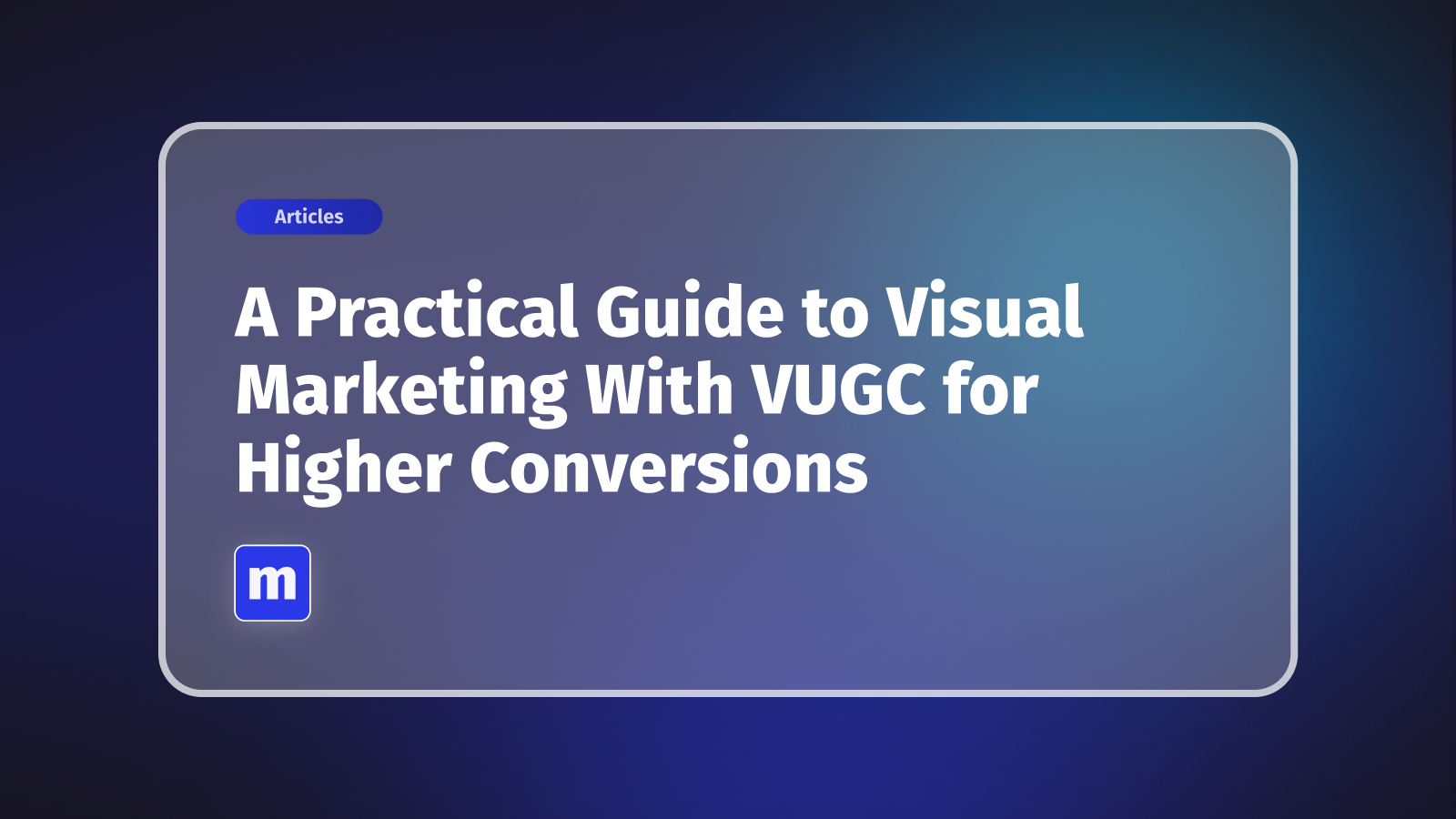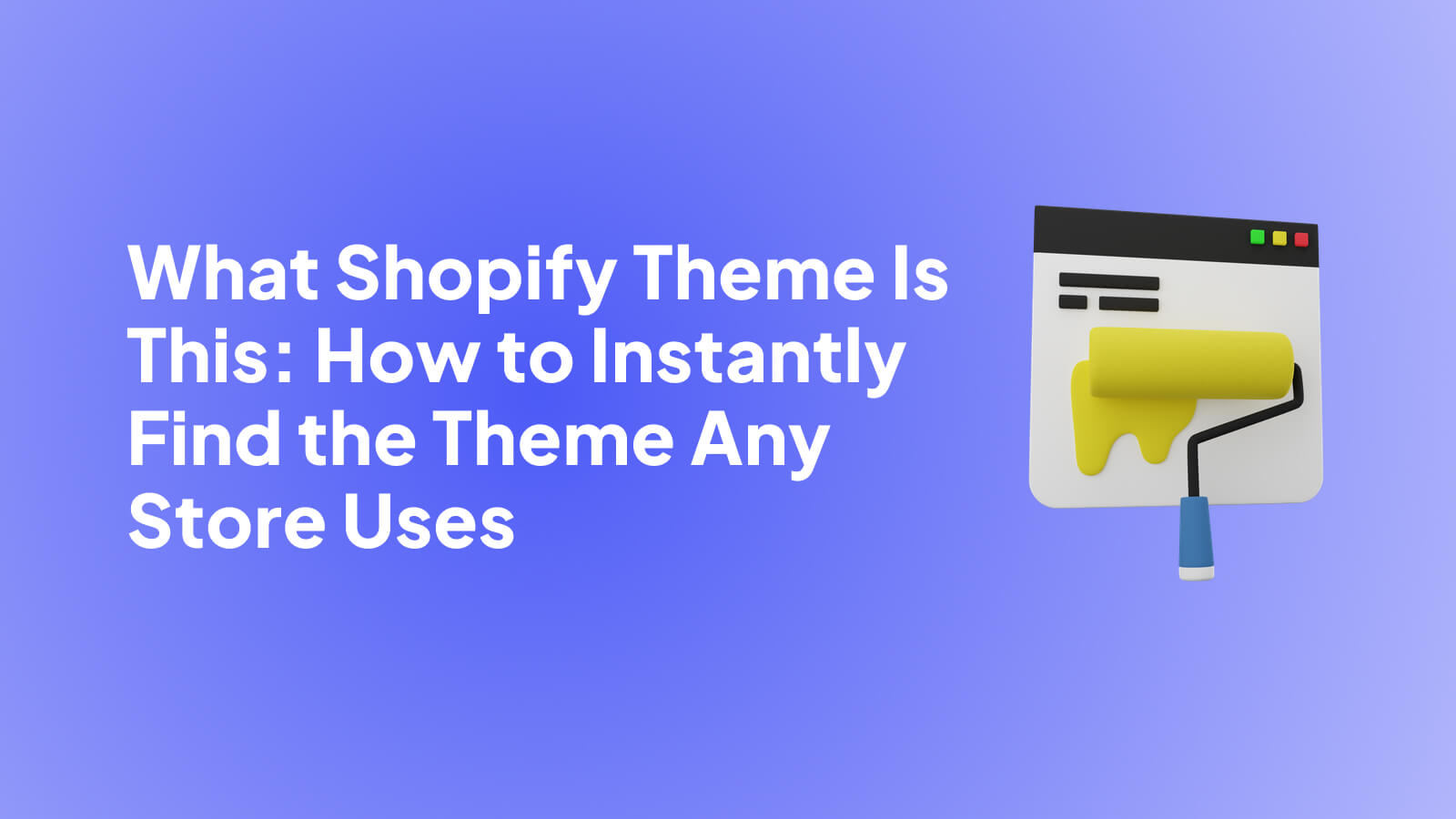.jpg)
Influencer Marketing and UGC
Influencer Marketing is a dynamic approach to marketing which leverages social media influencers to enhance brand visibility and credibility. Influencers, who have loyal followings and power to sway public opinion, create personalized content that resonates with their audience and, by extension, potential customers of the brands they endorse. The authenticity inherent in UGC provided by influencers helps bridge the gap between traditional advertising and the genuine endorsements consumers seek today.
This blog aims to unpack the multifaceted benefits of influencer UGC marketing and provide actionable insights into how businesses can harness its potential. From identifying the right influencers to integrating their content into e-commerce platforms, we explore strategies that not only increase engagement but also foster a trustworthy relationship between brands and their audiences. As we delve into the nuances of this marketing technique, we’ll also highlight how our services can seamlessly facilitate the integration of UGC, enhancing both consumer experience and business outcomes.
Understanding Influencer UGC Marketing
Influencer User-Generated Content (UGC) marketing is a modern approach that harnesses the authenticity and reach of influencers to amplify a brand’s message. Unlike traditional marketing content which is often perceived as corporate and sales-focused, influencer UGC is created by individuals who have established a strong rapport with their followers. This form of content is inherently more personal and relatable, making it a powerful tool for brands seeking to connect with their audience on a deeper level.
Influencers come in various forms, each offering unique advantages. Macro-influencers, typically with followers ranging into the millions, offer vast reach and can significantly boost brand visibility quickly. Micro-influencers, who tend to have followers in the thousands to low hundreds of thousands, boast higher engagement rates, often because their audiences find them more relatable and trustworthy. Nano-influencers, though smaller in follower count, offer the highest engagement rates and can influence highly niche markets with a personal touch.
The benefits of engaging with influencer UGC are many. First, it cultivates a sense of authenticity. Consumers are increasingly skeptical of traditional advertising; however, seeing a real person genuinely interact with a product can validate the brand's claims and encourage trust. This trust translates to engagement, as followers are more likely to interact with content that doesn’t feel overly promotional. Moreover, influencer UGC can expand a brand’s reach. When influencers share content, they introduce the brand to a broad and often diverse audience, effectively broadening the brand’s exposure beyond its existing customer base.
Incorporating influencer UGC into marketing strategies not only enhances brand authenticity but also leverages the influencers' credibility to foster a genuine connection with consumers. This connection is crucial in today’s digital marketing era, where authenticity often trumps overt advertising. Here at Moast, we have extensive experience in integrating forms kinds of UGC into successful marketing strategies. We have successfully worked with brands to take their customer’s content and turn it into highly impactful marketing campaigns.
How to Develop an Influencer UGC Strategy
Developing an effective influencer UGC strategy involves more than selecting individuals with the largest followings; it requires a nuanced approach to identifying influencers whose brand alignment and audience demographics match your marketing goals. Start by researching potential influencers who not only share your brand’s values but also have a history of engaging with their followers in meaningful ways. This alignment ensures the content they create will resonate with both their audience and your brand’s message.
Choosing the Right Influencers
The process begins with a thorough analysis of potential influencers. Look at their content quality, engagement rates, and the relevance of their audience to your target market. It’s essential to consider the influencer’s niche—be it fashion, technology, cooking, or any other—and how it aligns with your products or services. Micro and nano-influencers, often overlooked, can generate higher engagement and more authentic interactions due to their close-knit community feel.

Structuring Collaborations
Once the right influencers are identified, the next step is to structure the collaboration. Decide if this will be a one-time campaign or a long-term partnership. Long-term relationships can yield more organic and sustained engagement, as influencers become genuine advocates for your brand over time. Establish clear guidelines for content creation to ensure that the final UGC aligns with your brand’s identity and campaign goals. However, allowing influencers creative freedom within these guidelines can lead to more authentic content and better reception among their followers.
Sending Products to Influencers
Sending free products to influencers as part of an unpaid promotion is a common practice but requires thoughtful execution. Choose products that not only appeal to the influencer but will also excite their audience. Include clear instructions on any expectations for the content’s style, context, or usage, while respecting the influencer's unique voice. Additionally, be mindful of legal considerations, ensuring transparency about the partnership with clear disclosure practices as required by advertising standards.
By carefully selecting influencers, structuring thoughtful collaborations, and managing product deliveries effectively, brands can create impactful UGC that enhances their visibility and credibility in a crowded market. This strategy not only promotes authenticity but also builds lasting relationships with both influencers and their audiences.
Creating Compelling UGC Campaigns
Developing compelling user-generated content (UGC) campaigns with influencers is both an art and a science. It begins with setting clear, measurable objectives. Whether the goal is to increase brand awareness, enhance engagement, or drive sales, defining these objectives upfront guides the direction of the campaign and the selection of appropriate influencers.
Key Elements of Successful UGC Campaigns
A successful influencer UGC campaign hinges on the balance between guided objectives and creative freedom. Allowing influencers the liberty to craft content that feels natural and authentic to their style encourages genuine representation of the brand. This authenticity resonates with their audience, making the content more relatable and impactful. To maximize reach and engagement, incorporating branded hashtags and strong calls to action is crucial. These elements not only drive audience interaction but also simplify the tracking of campaign performance.
Case Studies of Effective Campaigns
Examining case studies, such as a campaign by a lifestyle brand that leveraged micro-influencers to showcase everyday uses of its product, can provide valuable insights. The campaign’s success was rooted in the influencers’ ability to weave product usage into their daily routines, making the endorsements feel more like genuine recommendations rather than advertisements.
Analyzing and Measuring Success
The final, critical component of a UGC campaign is the evaluation of its effectiveness. Brands should use advanced analytics tools to track key performance indicators like engagement rates, hashtag usage, and conversion rates. This data not only measures the success of the current campaign but also informs future strategies. Adjustments may include shifting the focus towards influencers whose content yields higher engagement or refining the campaign’s messaging to better resonate with the target audience.
By carefully crafting campaigns that combine clear objectives with creative freedom, and rigorously analyzing their impact, brands can significantly enhance the effectiveness of their marketing efforts through influencer-generated content.

Integrating UGC into E-Commerce Platforms
Integrating user-generated content (UGC) into e-commerce platforms like Shopify is a strategic move that can transform how consumers perceive and interact with a brand online. This integration not only enhances authenticity but also provides social proof, encouraging more consumers to engage with and purchase from the brand.
Methods for UGC Integration
The most effective way to incorporate UGC is through direct inclusion on product pages. Showcasing real-life images and videos from users can dramatically affect the purchasing decisions of potential customers. For instance, incorporating a photo gallery on each product page that features images of customers using the product can make online shopping experiences more tangible and relatable.
Another powerful method is creating dedicated UGC galleries. These galleries can serve as a community hub on your website where potential buyers can see how others are enjoying their purchases. This not only builds a community around your products but also keeps consumers on your site longer, which can lead to increased sales.
Here at Moast, we have in depth experience in all of these methods of UGC integration, and more. We are experts at applying these strategies in nuanced forms for each of our clients, with proven track records of success.
Best Practices for UGC Integration
To ensure effective UGC integration, maintaining brand consistency is crucial. It’s important to curate content that aligns well with your brand’s aesthetic and values. This might mean selecting UGC that matches your brand’s color scheme or embodies the lifestyle your brand promotes.
Also, respect for user privacy and securing the rights to share customer content is essential. Always obtain explicit permission from content creators before featuring their content on your platforms.
Lastly, optimize UGC for SEO by encouraging the use of relevant keywords in user reviews and tags. This can enhance your site’s search engine visibility, driving more organic traffic.
By thoughtfully integrating UGC into your e-commerce strategy, you can enhance user engagement, provide compelling social proof, and ultimately, drive better sales conversions.
UGC’s Role in Building Brand Loyalty and Trust
User-generated content (UGC) is not just a marketing tool; it’s a cornerstone for building trust and fostering brand loyalty among consumers. In a digital age where traditional advertising often falls short of convincing savvy consumers, UGC stands out by showcasing authentic experiences and genuine endorsements.
Impact on Consumer Trust
UGC provides a level of transparency that is highly valued by today’s consumers. When potential customers see real people—not just professional models or actors—using a product, their trust in the product increases. This is because UGC serves as social proof, demonstrating the product’s value and effectiveness in real-world scenarios. Moreover, UGC often includes personal stories or detailed reviews that provide a deeper insight into the user experience, further influencing purchasing decisions.
Integrating UGC in Customer Journey Mapping
To leverage UGC effectively, it should be integrated at various points in the customer journey. From discovery to consideration and final decision-making, UGC can guide potential customers at every step. For instance, featuring customer photos and testimonials on product pages and during checkout can reassure buyers about their purchase decision, reducing cart abandonment rates.
Encouraging Ongoing Content Creation
Encouraging existing customers to share their experiences can be achieved through incentives like discounts or entry into contests. This not only generates more UGC but also keeps the customer engaged with the brand, enhancing loyalty.
By actively incorporating UGC into their marketing strategies, brands can cultivate a more trustworthy image and build a loyal customer base that feels connected to the brand through shared real-life experiences.
The Future of Influencer UGC Marketing
The future of influencer UGC (User-Generated Content) marketing looks promising, driven by evolving technologies and shifting consumer behaviors. As digital platforms continue to innovate, the ways in which brands and influencers collaborate and engage with audiences are set to transform even further.
Emerging Trends
One significant trend is the increasing use of artificial intelligence (AI) in curating and optimizing UGC. AI technologies can analyze large volumes of content to identify the most impactful posts, predict trends, and personalize content for individual users, enhancing the effectiveness of UGC campaigns.
Another emerging area is the integration of augmented reality (AR) and virtual reality (VR) into UGC. These technologies offer new ways for influencers to create immersive content that allows consumers to experience products in virtual environments before making a purchase decision.
Predictions for Integration
Looking ahead, we can expect UGC to become even more integrated into e-commerce platforms. Influencers will likely play a critical role in this integration, helping brands not only to showcase products but also to create interactive and engaging shopping experiences that resonate deeply with consumers.
As brands strive to stay relevant in a rapidly changing digital landscape, leveraging advanced technologies to enhance influencer UGC marketing will become increasingly important.
Related content
Turn your social content into a revenue channel
Turn your TikToks and Reels into shoppable videos and boost conversions by 3.5x.












